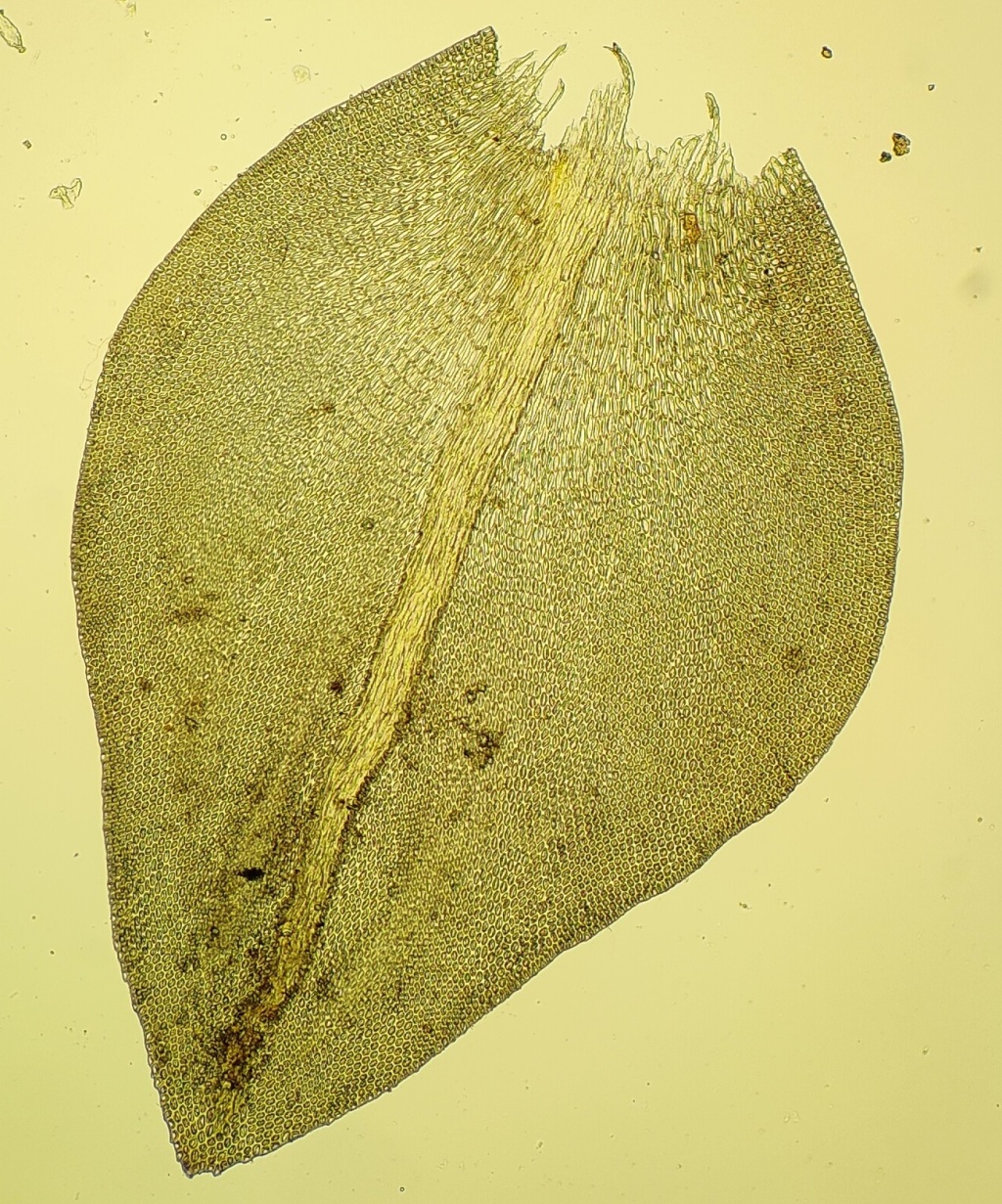Cryphaeaceae
Autoicous. Asexual propagules absent. Tufts or rarely cushions on trees or rocks, sometimes rheophytic. Stems differentiated into creeping primary stems and erect to pendent secondary stems; primary stems without leaves or leaves reduced and scale-like, densely covered with rhizoids ventrally; secondary stems irregularly to pinnately branched toward apex, usually in apical half, rarely simple or tri-pinnately (not in Victoria) branched, glabrous or with rhizoids clustered in leaf axils (not in Victoria); paraphyllia absent; pseudoparaphyllia absent or present; central strand absent. Leaves arranged around stem and facing all directions, branch leaves sometimes smaller than stem leaves otherwise monomorphic, erect- to wide-spreading when moist, imbricate and erect or appressed when dry, decurrent; apex acute to acuminate, occasionally obtuse, with (not in Victoria) or without a hairpoint; costa single, rarely forking (not in Victoria), subpercurrent, percurrent, occasionally terminating in apical half well below apex, or rarely excurrent (not in Victoria), short and double (not in Victoria) or absent (not in Victoria); margin entire or crenulate to serrulate toward apex, plane or recurved, rarely incurved (not in Victoria), without a border; laminal cells elliptic to rhomboid or hexagonal, usually becoming longer near costa at base and near apex, smooth to prorulose, moderately thick-walled, shorter toward margins; alar cells indistinctly differentiated or somewhat inflated and hyaline to brownish. Pleurocarpous or cladocarpous. Capsules erect, symmetric, immersed, operculate, annulus well-differentiated and caducous, or absent. Calyptra mitrate or cucullate, scabrous by projecting cells or smooth, glabrous. Operculum conic or rostrate from a conic or flat base. Peristome single (not in Victoria) or double and alternate; exostome of 16 entire teeth; endostome of 16 segments arising from a low basal membrane, or absent (not in Victoria); cilia absent.
Nine genera and 64 species, with species throughout tropical and southern Africa, South and Central America, the Caribbean, the islands of the south-west Pacific, Malesia, south-east Asia, and eastern Australia, and in the south-east USA, Juan Fernandez Islands, China, Korea, Japan, India, Sri Lanka, and Europe; three genera and four species in Victoria.
The Cryphaeaceae are a distinctive family characterised by a combination of immersed capsules, autoicous sexuality, stolon-like primary stems giving rise to spreading secondary stems, and almost always a single costa (Buck 1980; Reese & Zander 2014).
 Spinning
SpinningBuck, W.R. (1980). Animadversions on Pterigynandrum with special commentary on Forsstroemia and Leptopterygynandrum. The Bryologist 83: 451–465.
Reese, W.D.; Zander, R.H. (2014). Cryphaeaceae, in Flora of North America Editorial Committee (eds), Flora of North America, vol. 28: Bryophyta, part 2, pp. 584–589. Oxford University Press, New York.


